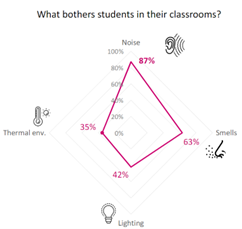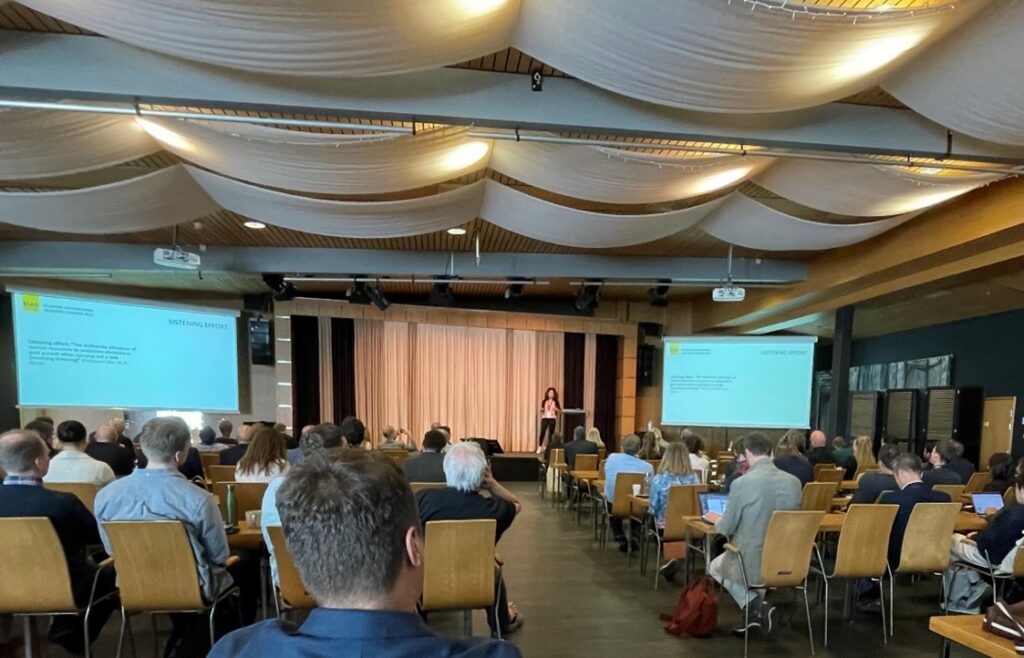
EIAS 2023: Chiara Visentin, senior researcher at Eurah Research in Italy, held an interesting presentation at the recent EIAS2023. It was about the topic of background noise in classrooms, and how this affects the pupils’ task performance.

Even though a classroom meets the minimum acoustic requirements, there is no guarantee that the room is an optimal learning environment. Acoustic measurements – usually reverberation time – are done in empty rooms, with no background noise apart from any technical installations. The moment people enter the room, the sound level increases. Pupils make sounds – moving, coughing, chatting – simply just being. This perspective is rarely taken into consideration when planning an acoustic environment. However, it definitely affects the psycho acoustic environment.
Previous study findings
A study conducted in 2018 (Bluyssen et al.) shows that 87% of students are bothered by noise. In comparison, only 35% are bothered by the thermal environment.

Visentin’s study investigates how increased background noise and disturbances challenges the cognitive capacity of the pupils. Sound filtration is demanding for especially the younger children, as children do not have a fully developed ability to filtrate sound until the age of 15.
Listening effort: ”The deliberate allocation of mental resources to overcome obstacles in goal pursuit when carrying out a task [involving listening]” (Pichora-Fuller et al., 2016)
She also looked into how the interaction between individual skills and listening conditions affects respectively task accuracy and motivation for the pupils.
Pupils’ chatting was found to be the most detrimental to speech perception, but also to more complex tasks such verbal- or math tasks. It impairs children’s accuracy, effort, and motivation during listening comprehension in real classrooms (with a “correct” acoustic design).
The importance of signal to noise ration in classrooms for listening
It is imperative to take signal to noise-ratio into consideration when designing a classroom. Reverberation time is an important acoustic parameter. However, with an increased focus on speech intelligibility and room gain the listening conditions for the pupils, and the teachers’ working environment will improve.
Background noise in classrooms
This is also important regarding universal design: Children with a wide range of challenges or diagnoses. For example; children with hearing impairment, ADHD, APD, autism and sound sensitivity. These children, can especially benefit from increased listening conditions and lowered background noise. A student-centered approach to acoustic design will always be a good start when designing learning environments.


Watch Chiara’s “Background noise in classrooms: How it affects performance” full presentation here
More about EIAS webpage here!
This post was written by Halvor Berg, Concept Developer, Norway

